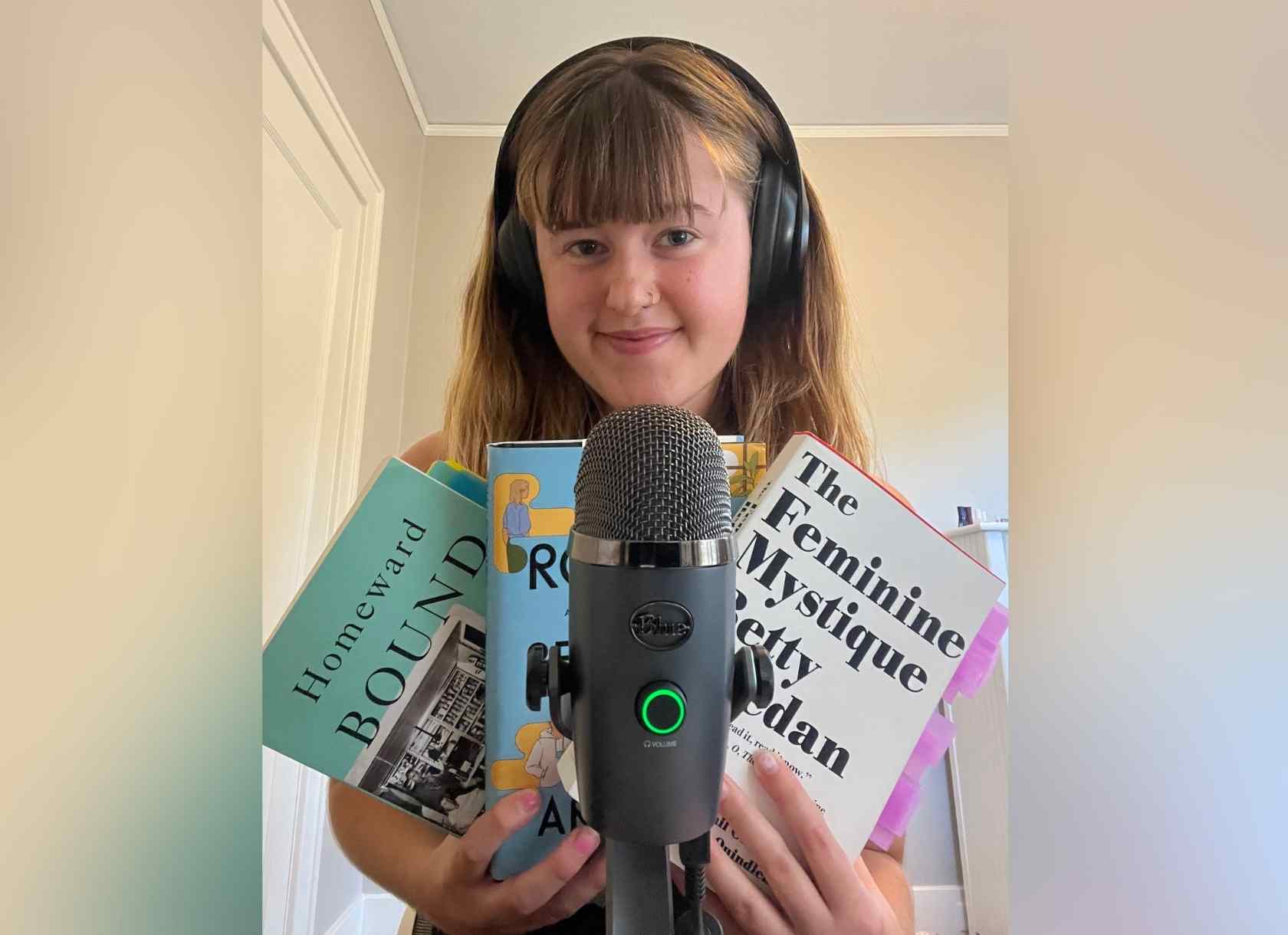By Laura Wilkinson

While taking a course on the politics and pop culture of Cold War America, Mirabella Miller ’24 became fascinated with the daily reality of living under threat of a nuclear bomb. Now, the American studies major has expanded a concept initially conceived as a final project for that course into a Scripps-funded summer research project: a podcast that examines how women view their future personal and professional accomplishments through internalized gender stereotypes.
Instead of focusing on a specific, existential dread-inducing event, Miller is comparing our current emotional circumstances to the overall climate of existential doom created by nuclear bomb fears in the 1950s.
“I’m using instances when that dread was articulated by women to historians and journalists, such as Betty Friedan when she wrote The Feminine Mystique, to illustrate this parallel,” Miller says. “I am also drawing from scholarly and popular sources and conducting oral history interviews with Claremont Colleges students and alumni about their relationship to their gender in the face of both personal and political crises.”
Funded by the Virginia J. Esterly Award, established in 1949 to provide financial support for Scripps students conducting summer research, Miller has been able to devote her summer to her project. Through her podcast Dystopian Sweetheart, Miller is hoping to illustrate a compelling parallel between the existential nuclear dread from the past and the modern-day existential dread created by climate change, dwindling economic prospects, and political animosity.
“There’s a tendency now to think things are the worst they’ve ever been. By comparing people’s, particularly women’s, responses to these times of dread, we can maybe find clues to reckoning with it and building a better world,” Miller says. “While scholarly sources haven’t caught up in terms of the minutiae of young women’s online gender presentations, many scholars have done interesting work about how people cope with their circumstances.”
Miller has referenced existing academic literature such as Cruel Optimism by Lauren Berlant, Escape From Freedom by Erich Fromm, Beyond Psychic Numbing by Robert Lifton, and Capitalist Realism by Mark Fisher to inform her research. She’s also turned to a more modern source of conversation around feminism, gender presentation, and existential dread: TikTok.
“I hope to inspire dialogue about online portrayals of femininity, such as the rise of self-described ‘bimbos’ on TikTok, who are attempting to reclaim the term and argue that it’s okay as a woman to just be pretty and have no substance beyond,” Miller says. She likewise hopes to explore “the cultural death of the idea of ‘girlbosses,’ which signals a rejection of mainstream corporate feminism. This rejection not only provides insight into young women’s future ambitions, but also offers a primer on how to stay engaged with such causes, instead of reverting to regressive aesthetics that are not liberating.”
“Mirabella has embarked on an ambitious, creative, and timely summer project,” says Claremont McKenna College Associate Professor of History Lily Geismer, Miller’s summer research adviser. “It draws important connections between the past and the present and addresses the ways in which global events impact the daily life and decisions of young people.”

